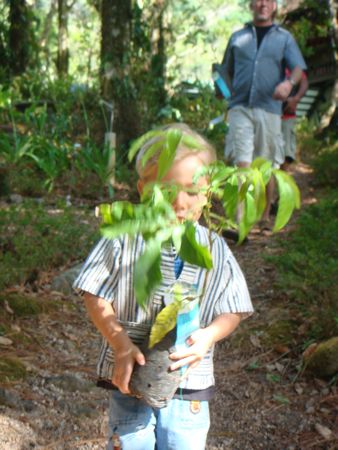Jinotega

When walking the cobbled streets of Jinotega, you can't help but feel you're at the edge of the world, with all kinds of unknowns in the hills to the north and east. In fact, hundreds of kilometers of wild, lush mountain country beckon to the east. East of the city the pavement stops, the roads turn rutted and bumpy, bus service is less frequent, and the accommodations dwindle ... But the immense department of Jinotega is comprised of hundreds of small communities and thousands of farmers who make their livelihood in the hills around them &emdash; including many who have barely ever traveled beyond this land in their lives.
I've always liked Jinotega, since the first time I visited it on a rainy afternoon in September, 1998. One of Nicaragua's higher departmental capitals, I find it cooler and greener and redolent of coffee and adventure.
In 2000, penning the first edition of the Moon Handbook to Nicaragua, I wrote:
When walking the cobbled streets of Jinotega, you can't help but feel you're at the edge of the world, with all kinds of unknowns in the hills to the north and east. In fact, hundreds of kilometers of wild, lush mountain country beckon to the east. East of the city the pavement stops, the roads turn rutted and bumpy, bus service is less frequent, and the accommodations dwindle ... But the immense department of Jinotega is comprised of hundreds of small communities and thousands of farmers who make their livelihood in the hills around them — including many who have barely ever traveled beyond this land in their lives. Jinotega is replete with fragrant valleys of orange groves, white corn, plantains, sweet vegetables, and a whole lot of cattle. But in between the small farms, Jinotega is open space — virgin forest, small freshwater lagoons, stately mountain ranges, and some of the loveliest rivers in Nicaragua.
I love that paragraph; and I love it that thirteen years later, it's still mostly true. "Mostly" because while I wasn't looking, lots of things improved. We visited at the end of April 2013, when the end of the dry season had Managua practically in flames and the hot air made sleep an exercise in sweat and dehydration. So we bundled up the family and did what I'd wanted to do anyway: head north into the Jinotegan mountains.
Jinotega was brighter and busier, had a lot more commerce, and novelties like an electrodomestics store and a lingerie business, both mostly unheard of in 2000. The park had received a clean coat of paint, but the treetops remained full of birds. And unfortunately, the surrounding valley hillsides looked a lot barer than I'd remembered.
But we slept well, and I returned to stifling Managua more convinced than ever that someday I'll return to Jinotega, and call it home for a while: it's just a matter of when and why.
Trackbacks
The author does not allow comments to this entry

Comments
Display comments as Linear | Threaded